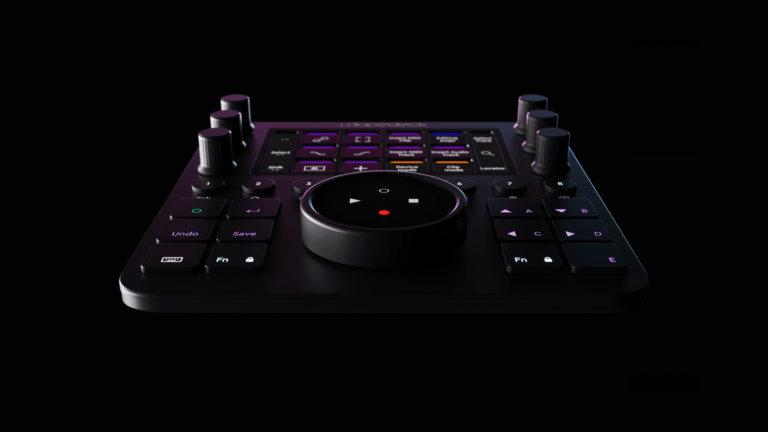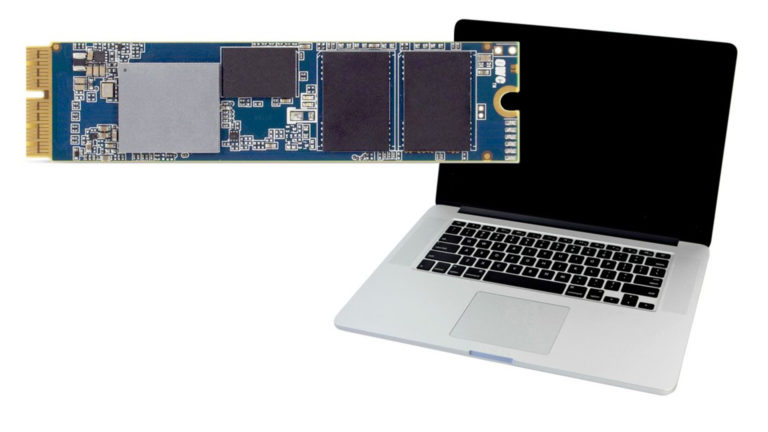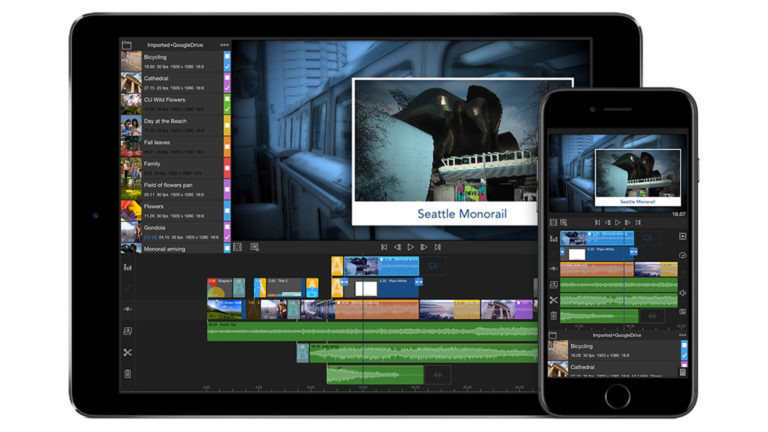A Logical Yet Impressive Upgrade to a Powerful Piece of DAW Software
The percentage gets even higher in audio post. Apple’s Garage Band and
Soundtrack programs have really captured a lot of attention lately in
the community of editors, post sound mixers, and independent media
makers of all descriptions. Soundtrack Pro, which Apple unveiled at
NAB, has generated its own buzz with its intuitive, visual interface.
The technology in all of these programs has its roots in Logic,
including the implementation of software instruments, Apple Loops and
advanced filters and effects. While Logic spent many years improving
under its original German developers, Emagic, it’s found new life in
this first Apple version of the tool and as part of the Apple suite of
production tools.
features it includes in one package. A full software-only digital audio
workstation (DAW), it provides a vast array of music composition and
sound design tools that can record, edit, and mix audio, utilize loops
and filters, supports video and includes a robust set of internal
software instruments and scoring features.

a movie, Logic is designed for creating and manipulating music. The
software instruments are decent enough that I’ve seen many pro
musicians use them on stage for live performances. A MIDI keyboard, a
FireWire audio interface and a Mac laptop loaded with Logic is the
basic set up in those cases. Logic is also used to compose all kinds of
music. Lots of musicians use it for affordable composition and audio
post in their home recording studios; it’s also running on large-scale
Pro Tools HD hardware in studios.
compatibility with the other Apple programs is very tight, making the
experience of using Logic with Final Cut and Apple’s other audio
programs relatively simple. Say you have a 30-second spot that needs a
music background and also requires a few sound effects. You can start
by importing a QuickTime movie of your spot created in Final Cut Pro
into Logic’s video track. The video will play on the desktop or through
an external FireWire device. The audio tracks from the video are placed
in their own audio tracks in the timeline, where they can be mixed and
processed as necessary.
- You can record additional audio tracks through an audio interface.
- You can import Apple Loops from a browser that’s similar to Garage Band. The loops can be stretched, retimed, rekeyed and manipulated in all the same ways as in Garage Band.
- You can import an entire Garage Band project, with full access to all instruments. When GarageBand songs are imported, all the GarageBand instruments load as plug-ins, letting you maximize the performance or make modifications as needed.
- You can set up and record MIDI tracks for controlling outside MIDI devices.
- You can set up and record tracks for MIDI "audio instruments" that control the bank of software instruments that are internal to the program. You can record as many tracks as your project requires. The instruments and loops provide a huge audio palette to work with.
fairly standard mixing window. The mixing has full automation and can
be controlled via an excellent tactile interface from Mackie (Mackie
Control); during my test, this gave me access to flying faders and most
Logic functions. For many projects, you may decide to finish your mix
in Logic itself. However, mixed tracks with the video can also be
exported as a QuickTime movie to Final Cut Pro or Soundtrack Pro if you
want to tweak them some more. Or, you could use Logic’s score window to
output printed scores of the MIDI generated tracks and use them for
conducting live recording sessions with studio musicians.
files, voiceovers or any other audio files and spot them into tracks
that give you sub-frame accurate placement before creating a final mix.
There are several special tools in Logic’s arrange window that make
this a breeze.
to 192 kHz for both audio recording and playback, with a maximum of 255
audio tracks.
Window is a horizontal timeline with unlimited tracks and the Mixer
window is an emulation of vertical channel strips in a mixer format.
Each channel strip has a full compliment of effects sends. Whatever
underlying bus structure your project requires can also be created in
software. There are over 70 built-in effects plug-ins that range from
guitar-amp modelers to a variety of EQ’s and dynamics. Logic’s new
Distributed Audio Processing (DAP) lets multiple computers on a network
share the computational load of plug-in DSP calculations for Logic
instrument and effects plug-ins inserted in audio and instrument tracks
(but not AU plug-ins).
well as a number of lesser-used formats. You can also export complete
songs or individual audio tracks or regions. Logic can extract
soundtracks from QuickTime Movies and replace a QuickTime movie’s
soundtrack with rendered audio from a Logic song. There are advanced
Bounce functions for mastering to most audio formats, including MP3 and
AAC encoded files. The Waveburner application is included for burning
audio CDs.
previous versions of Logic and three are new. ESM is a simple
monophonic synth. ESP is a polyphonic synth that generates classic
analog synth sounds. ESE is for generating ensemble and atmospheric pad
sounds. ES1 and ES2 are more complex virtual analog synths. The EVOC
Polysynth is a combined real-time vocoder and polyphonic synthesizer.
synthesizer; Ultrabeat, a 25-pad drum module; and Sculpture, a very
interesting sound-design tool.
Acid Loops can also be used directly in Logic, including the new Jam
Packs from Apple. With the four current Jam Packs and the original
Garage Band and Logic loops, there are over 6,000 loops ready to go.
You can find even more from third-party providers, now offering them
commercially.
very similar to Garage Band. Apple Loops can be searched by various
keyword categories and then immediately auditioned by a single click.
You can then drag your selected loops directly from the Loop Browser
into the Arrange or Audio windows, where they automatically adapt to
the tempo and key of the song and any subsequent tempo or transposition
changes.
Loops with MIDI information are imported to virtual-instrument tracks,
Logic automatically installs the plug-in instrument, effects and
settings necessary to reproduce the audio file. You can then make pitch
and tempo changes, adjust the sound of the instrument, or modify the
performance with no quality loss.
results, it can be difficult to find the perfect loop for your purpose
at any given point. That’s why I like the Apple Loop Utility, which you
can use to create your own loops from any audio or MIDI region. Once
created they become real Apple Loops and take on all the flexibility of
the commercial ones. Here’s another tip: Add your own descriptive
metadata to the loop and you’ll be able to search for it again. It’s
the best way I know to create an extensive personal loop library.
better. However, those earlier versions were developed on the cutting
edge of MIDI and were conceptually difficult for many users to get
their heads around. Logic 7 is an even more powerful program and is
another fine example of the Apple method of refining the interface to
make it at once both elegant and user friendly. It’s not perfect,
though. There are still some features and workflows that will benefit
from further refinement. But what Apple has done to the interface has
improved the workflow overall. New users, in particular, won’t have
much of a learning curve either.
- For many projects, you may decide to finish your mix in Logic itself. However, mixed tracks with the video can also be exported as a QuickTime movie to Final Cut Pro or Soundtrack Pro if you want to tweak it some more.
- If you don’t want to finish in Logic Pro, mixed tracks and video can also be exported as QuickTime movies to Final Cut Pro or Soundtrack Pro.
- Add your own descriptive metadata to your personal loops and you’ll be able to search for them again. It’s the best way I know to create an extensive personal loop library.










Leave a Reply